Introduction
As described in detail in the November edition of Shipping Today and Yesterday, the Ravano family of Genoa had purchased their first steamships shortly before the First World War. Proceeding to become one of Italy’s larger tramp operators, in 1946 Alberto Ravano created Tidewater Commercial Co. Inc. (Tidewater) in the United States. Initially operating a 1902 built part passenger ship, given the name Tidewater, and some former U.S. colliers, a large fleet of dry cargo ships and tankers, placed under the Panama and Liberia flags, was managed by Tidewater until the mid 1980s.
Tidewater, initially established in California, was incorporated at Baltimore, Maryland, in February 1947. The Company’s general manager was Captain Paolo S. Saglietto who from 1927 to 1939 had served as master on board Ravano ships. When, in December 1941, his command San Giuseppe was seized by the United States Government at Norfolk, Virginia, he was interned for the remainder of the War.
After the War ended Captain Saglietto became a member of the Italian Technical Delegation formed to purchase Liberty ships from the United States Government and Alberto Ravano soon became its Chairman. The newspaper Baltimore Sun had reported in 1966 that Capt. Saglietto had been awarded the Caveliere Officiale Order of Merit of Republic of Italy, for fostering goodwill between the United States and Italy. Although Tidewater itself ceased shipowning in 1956 for a period of about six years until 1962, the fleets which the Company managed on behalf of Alberto Ravano were at that time fast expanding.
First Ships
Tidewater’s first ship is of much historic interest. Built at Sparrows’ Point by the Maryland Steel Corporation as Shawmut for the Boston Steamship Company, she had passed in 1909 to the United States Government owned Panama Railroad Company of New York and renamed Ancon. On 15 August 1914 she carried 300 guests for the first official transit of the Panama Canal from Cristobal to Balboa and in early 1919, as U.S.S. Ancon, she made two trips repatriating American servicemen from France.
Together with her sistership Cristobal, the Ancon was mainly employed transporting building materials from New York to the Canal construction areas and, after being given passenger accommodation in 1924, to Haiti and the Panama Canal zone. At some point prior to August 1939, when she was reactivated for the Canal’s 25th anniversary, the Ancon was laid up prior to sale. In October 1940 she was purchased by the Kaiser Group’s Permanente Cement and given her owning company’s name. Initially used to ship cement, the Permanente was soon put to use as a supply ship in the Pacific followed in 1946 by a voyage from Australia to the United States carrying War brides.
Purchased by Alberto Ravano in 1946, the Permanente was sent to Genoa for refitting, at a reported cost of USD 240,000, to carry 350 passengers and on 9 September 1947 left Marseille with a full complement of migrants bound for Australia and a cargo of phosphate for New Zealand. Renamed Continental in 1948 for a charter to Arnold Bernstein, she sailed from New York for Europe on 3 June 1948 on the first of four voyages bringing migrants to the United States. In 1949/50 the Continental made four round voyages between Genoa and Australia but, following engine problems experienced at Fremantle in March 1950, she was broken up at Savona in October 1950.
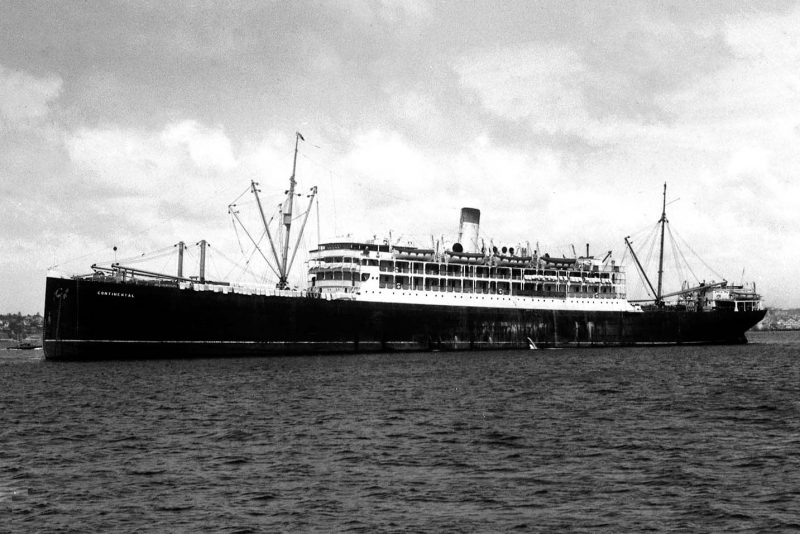
The Cristobal followed a parallel career, as Philippa being sold in 1946 to the Pan-Hellenic Shipping and Trading Company and employed carrying migrants from Greece and Italy to South America. It is believed that she was purchased in 1949 by Compagnia Genovese Di Armamento and, following her arrival at Genoa on 8 February 1950, took the new name of Esmeralda in 1950 but, after a year laid up, was broken up at Bari, Italy, in 1951.
Tidewater was subsequently delegated the management of many ships owned by Ravano subsidiaries created in Panama and Liberia. The first of these companies was Cia. Atlantica Pacifica S.A., a Panama company created in 1947 and first used to nominally own the small vessel Vrissi. Reportedly intended to be used transporting refugees from Civitavecchia to Israel, she was sunk at Genoa on 11 July that year after hitting a mine but was raised and sold in 1948 to owners in Sardinia. The Vrissi, which had been built at Jarrow as the yacht Vagrant in 1903 and had been used at Nice by the pioneer aviator Claude Grahame-White, was hired by the British Admiralty in August 1939, as they had done during the First World War, as an anti-submarine yacht but was taken over by the Greek Government in 1940.
It is reported that, following the purchase in 1946 of the vessel Tidewater, Alberto Ravano’s Italian company Societa per Azioni Industria Armamento (SAIA) had advanced over $1,500,000 to Tidewater to purchase further ships. It is understood that $500,000 had been received by SAIA from the Argentine Government for the wartime use of the 1907 built Voluntas, seized at Necochea on 25 August 1941 to operate as Rio Teuco until returned in 1946. It is surmised that the balance may have been similarly received from Argentina for the use of SAIA’s 1919 built Amabilitas and/or from Brazil for their use of the 1918 built Auctoritas and 1916 built Aequitas.
Between 1947 and 1952, Tidewater Commercial had thereby acquired the following ships, all flying the Panama flag:-
Ravano name |
Built |
Former owner |
Broken up |
| Sewall’s Point | 1918 | Eastern Gas & Fuel, Boston | 1948 |
| William N.Page | 1918 | Eastern Gas & Fuel, Boston | 1952 |
| A.L. Kent | 1920 | Eastern Gas & Fuel, Boston | 1957 (1) |
| Springwater (tanker) ex Trimountain | 1919 | ||
| Trimountain SS Co. Inc, Wilmington | 1954 (2) | ||
| Edgewater (tanker) ex Agwiworld | 1921 | ||
| Richfield Oil Co of California | 1954 (2) | ||
| Thomas P. Beal | 1921 | Eastern Gas & Fuel, Boston | 1954 (3) |
| Maryland ex Panenterprise | 1918 | ||
| Pietro Ruggiero, Genoa | 1954 (4) |
- Note 1: transferred in 1956 to Cia. De Nav. San Agustin S.A.
- Note 2: transferred in 1950 to Cia. Atlantica Pacifica S.A.
- Note 3: transferred in 1949 to Soc. Anon. Adriatico Tirreno Jonio Ligure, Genoa, and renamed Trinitas
- Note 4: The Maryland and both of the tankers were purchased by British breakers
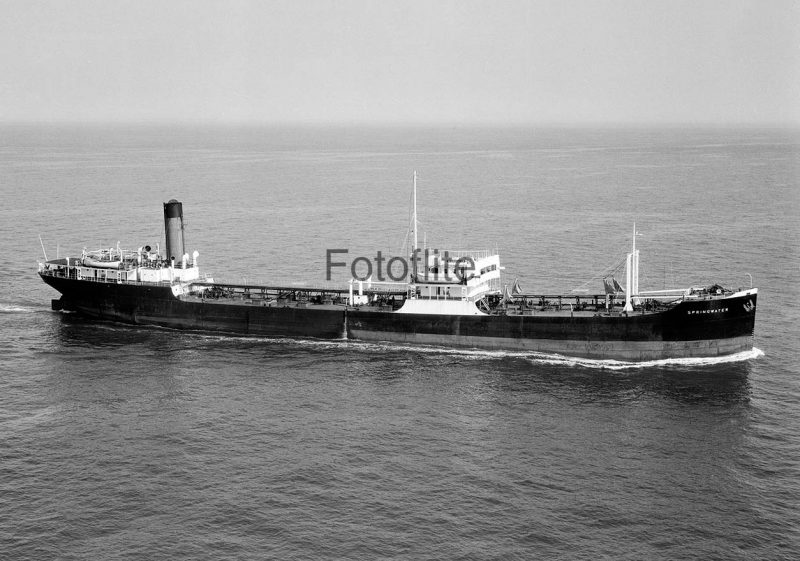
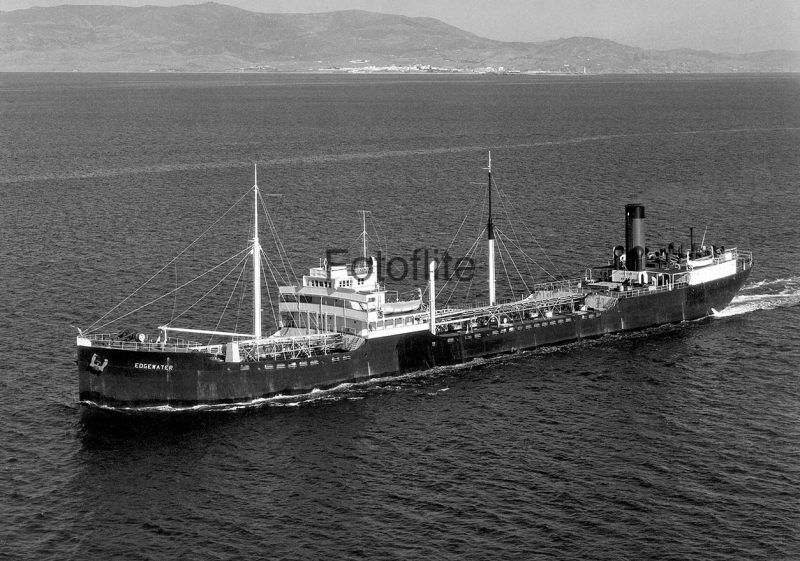
Fleet Development
In addition to the Springwater and Edgewater mentioned above, Cia. Atlantica Pacifica S.A. had by 1953 become the nominal owners of the following tankers:-
Ravano name |
Built |
Former owner |
Sold |
| Fairwater ex Scottish American | 1920 | Tankers Ltd. (United Molasses) | 1954 |
| Bridgewater ex Llanarth (built as Capsa) | 1918 | Llangorse & Picton, London | 1959 |
| Clydewater (new from John Brown, Clydebank) | 1951 | 1977 (1) | |
| Bluewater ex Haukefjell/Norholm (built as Empire Druid) | 1941 | Olsen & Ugelstad, Oslo | 1959 |
| West River ex Athelchief (built as Kongsten) | 1939 | Tankers Ltd. (United Molasses) | 1955 (2) |
- Note 1: transferred in 1968 to to Soc. Anon. Adriatico Tirreno Jonio Ligure, Genoa, and renamed Charitas
- Note 2: sold for further trading, converted in 1956 into an ore carrier and in 1960 into a standard bulk carrier, and broken up at Kure in 1969 as the Greek (A.Halcoussis) owned Yanxilas.
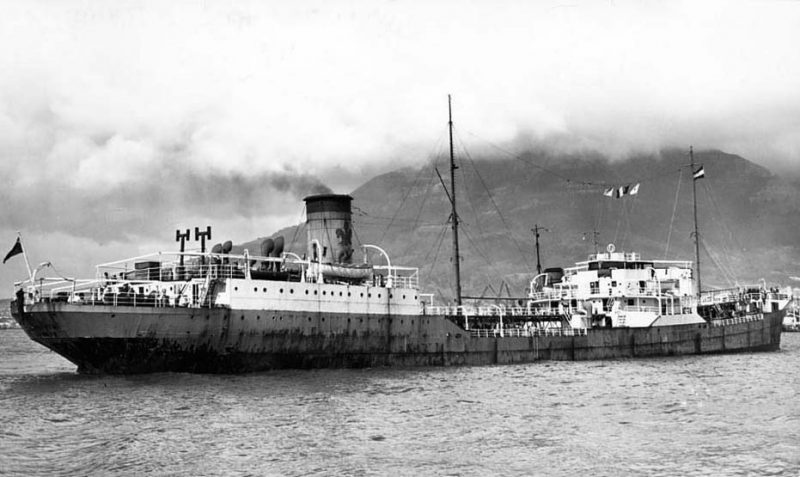
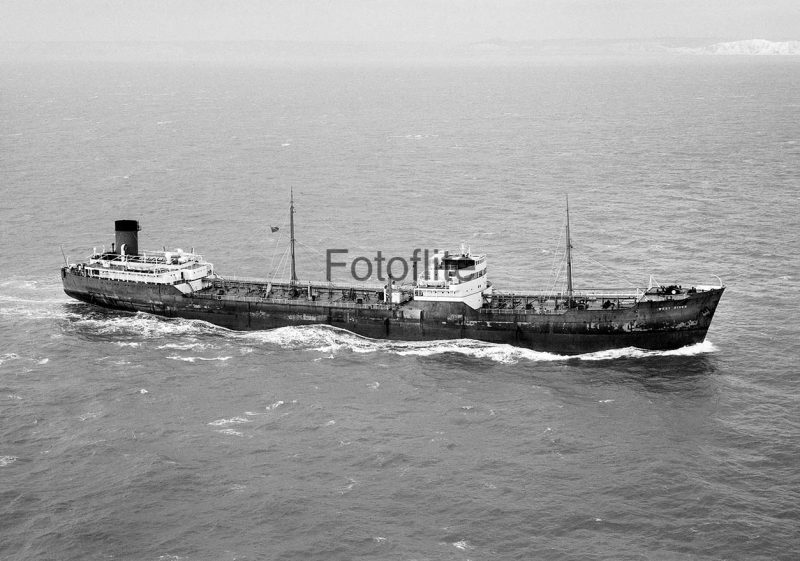
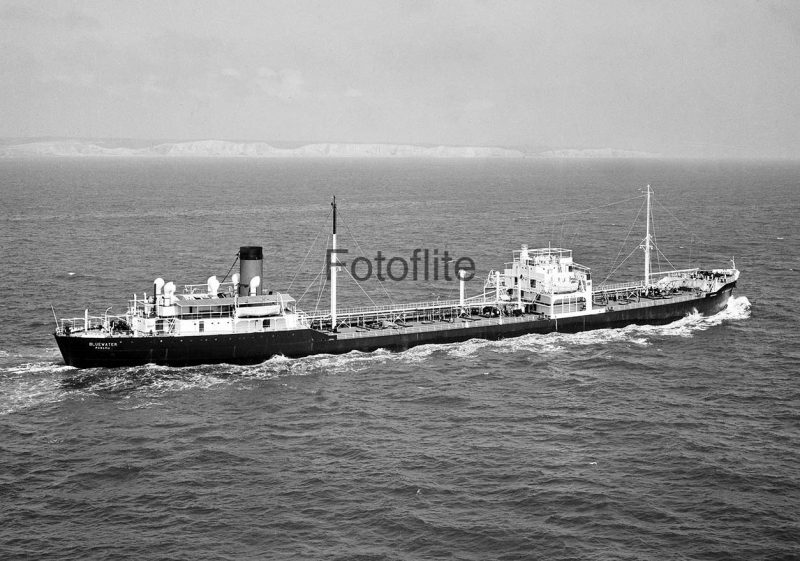
Following the end of the Korean War in 1953, protectionism in the United States was gaining momentum while at the same time relations between the United States and Panama were becoming strained. Alberto Ravano therefore proceeded in 1954 to create a new company in Liberia named International Nav. Corporation of Monrovia which by 1962 had proceeded to acquire the following dry cargo ships:-
Ravano name |
Built |
Former owner |
Sold |
|
| South River ex Britkon (built as Celtic Monarch) | 1929 | Woking Sg Co Ltd., Hull | 1959 | |
| Hudson River ex Ranella (launched as Fort Chimo) | 1942 | Erling Hansen, Kristiansand | 1960 | |
| Indian River ex Colonel Vieljeux (Empire Stronghold) | 1943 | Delmas-Vieljeux, Marseille | 1960 | |
| Deep River ex Avismere (Ocean Vision) | 1942 | Purvis Shipping Co., London | 1962 | (1) |
| Fairwater ex Freecrest (Empire Austen) | 1942 | Crest (Ivan Ivanovic), London | 1960 | |
| White River (new from Ansaldo) | 1958 | 1976 | ||
| Middle River ex Montello (built as Harriet Monroe) | 1944 | Nav. Alta Italia SpA, Genoa | 1961 | |
| Severn River ex Amsterpark (built as J.H.Drummond) | 1944 | NV Reedereij “Amsterdam” | 1965 | |
| Springwater ex Saint Marcouf (John Robert Gordon) | 1945 | French Govt. (CGT/MM) | 1961 | (2) |
| West River (new from Ansaldo) | 1962 | 1982 |
- Note 1: Sold for breaking
- Note 2: Springwater was sold to Seacrest Shipping Corporation of Monrovia. Renamed Seacrest, she was placed under the management of Overland Trust Bank of Lugano, Switzerland, which the unrelated Angelo Ravano had opened in 1957. Seacrest ran aground near Barcelona on 5 June 1963 during a voyage from Boston to Genoa but was refloated and towed to her destination. Following discharge she sailed on 16 September 1963 bound for the breaker’s yard at La Spezia.
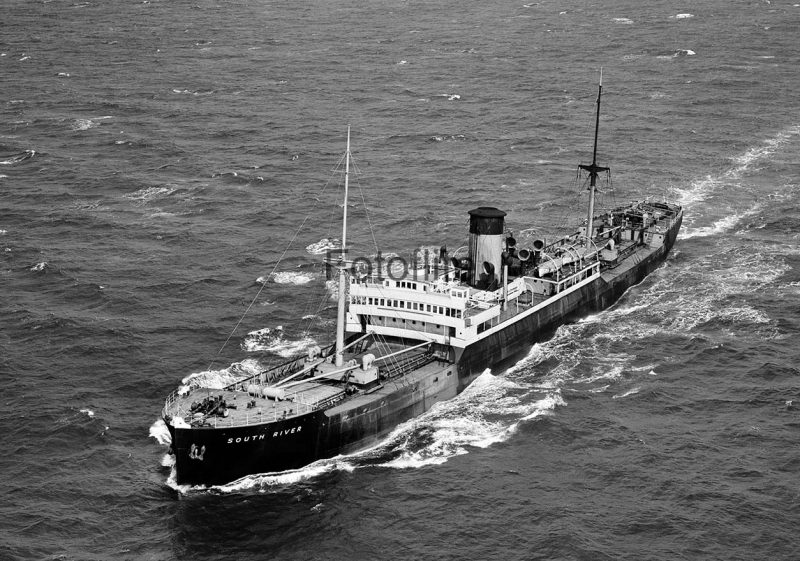
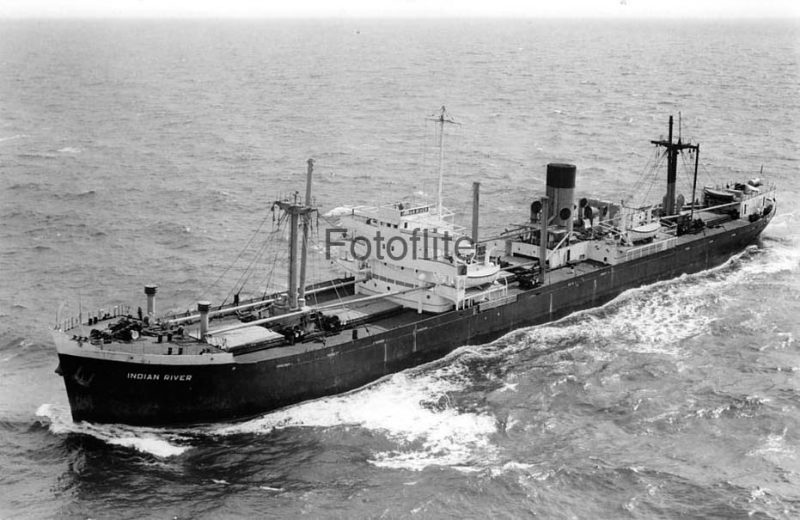
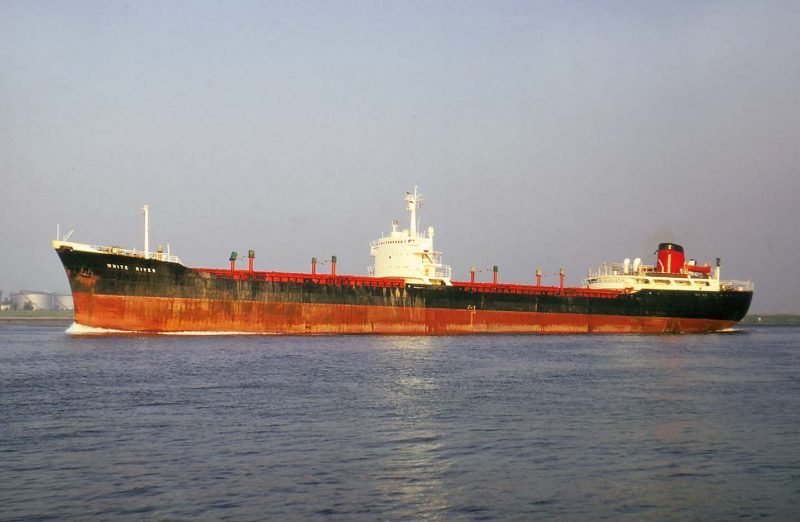

and the following tankers:-
Ravano name |
Built |
Former owner |
Broken up |
| East River (new from John Brown) | 1954 | 1974 | |
| Edgewater (new from John Brown) | 1957 | 1975 | |
| Potomac ex Hammersborg (The Cottonwoods) | 1944 | Johs. Hansen, Oslo | 1966 (1) |
| Bridgewater ex Daghild | 1948 | John P. Pedersen, Oslo | 1963 (2) |
| Silverspring (new from Ansaldo) | 1961 | 1976 (3) |
- Note 1: Potomac was, on her sale in 1966, replaced by a relatively new ship, the former Berge Edda, built at Stavanger in 1962.
- Note 2: broke in two during a storm 210 miles off the W. Australian coast on 30 January 1962 while on voyage from Abadan to Auckland with a cargo of crude oil. Stern section towed to Hong Kong in January 1963 for breaking.
- Note 3: in 1973 transferred to the Italian flag, in the nominal ownership of “Albis Ardua”, and renamed Panormus, registered at Palermo.
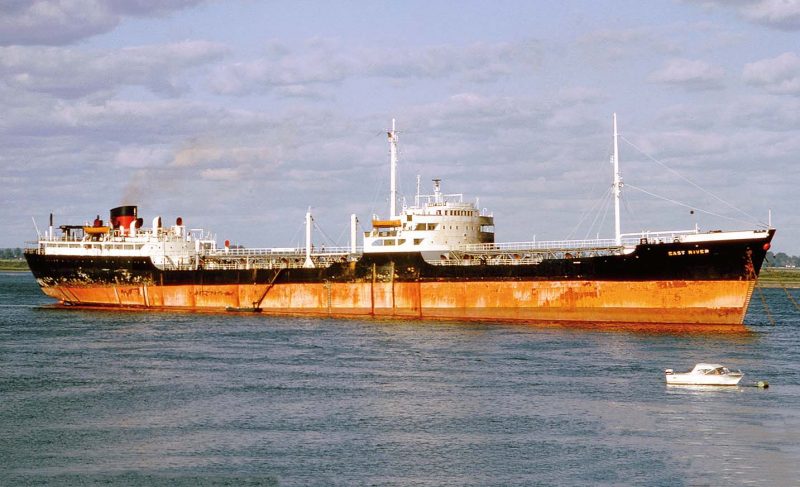
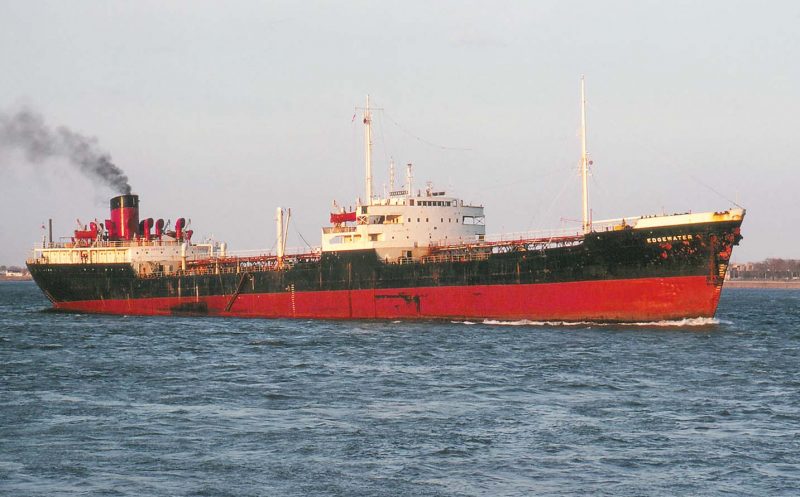
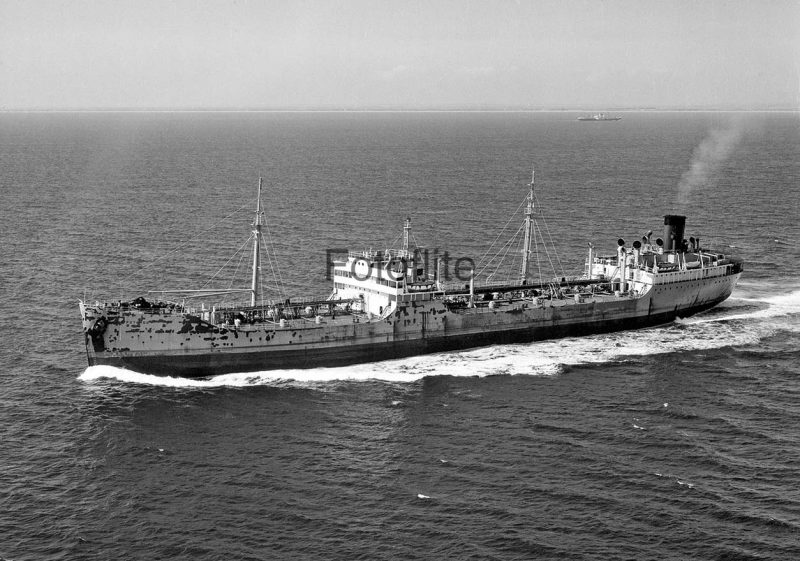
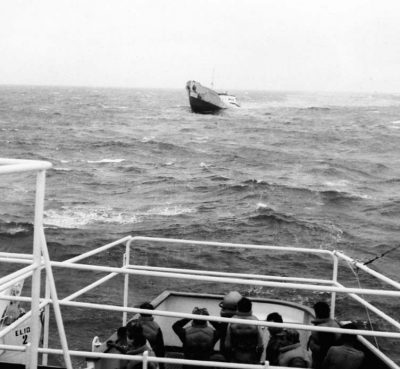
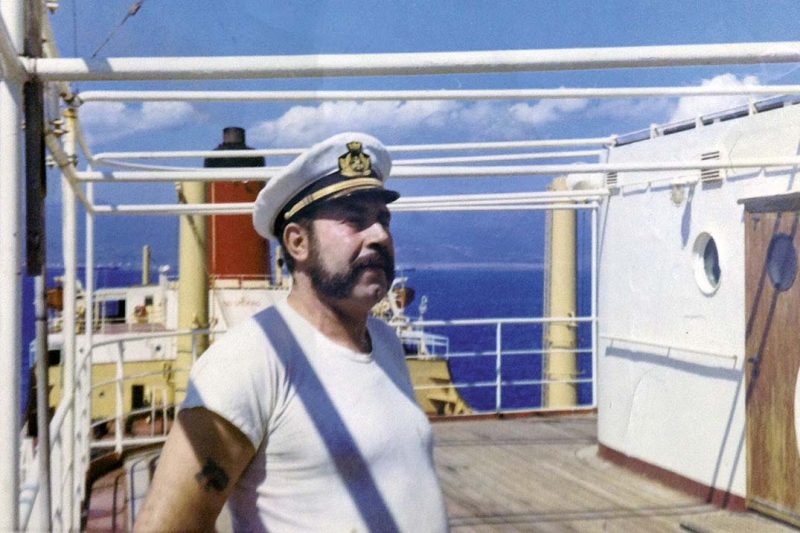
However, following the signing of a treaty between the United States and Panama in January 1955, a further Panama company named Cia. De Nav. San Agustin S.A. was created by Alberto Ravano, which by 1958 had acquired the following dry cargo ships:-
Ravano name |
Built |
Former owner |
Broken up |
| Patapsco River ex Running Eagle (Moose Mountain Park) | 1948 | Houston Inv. Inc. | 1963 |
| Springwater ex Sanbar (Gundulic, Winfried) | 1911 | Chilean (note) | 1958 |
| Continental ex Alcyone Angel (built as Ocean Angel) | 1942 | Vergottis, London | 1960 |
| Green River ex Troilus (delivered as Samharle) | 1943 | Ocean S.S., Liverpool | 1963 |
- Note: Gundulic, owned by Jugoslavenski Lloyd of Dubrovnik, had stranded at Puerto Bueno, Smyth Channel, Magallanes, on 19 March 1934 and was refloated by the Chilean Navy in 1944.
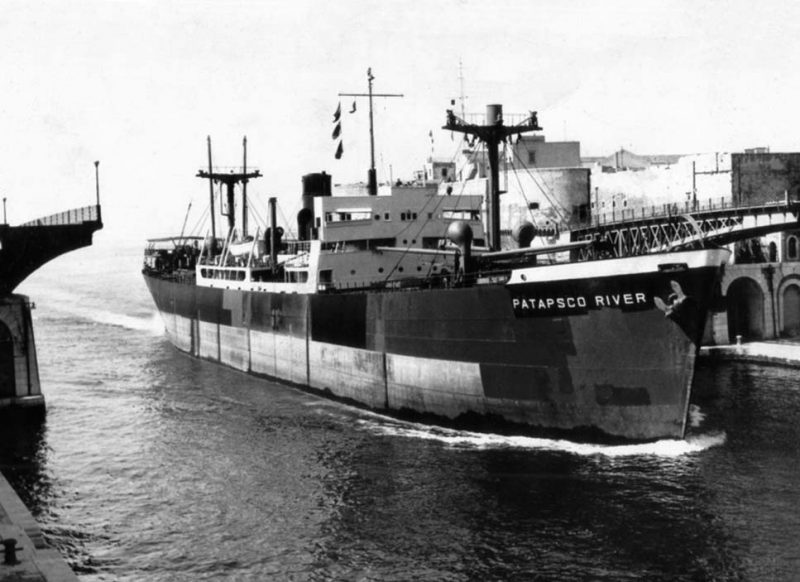
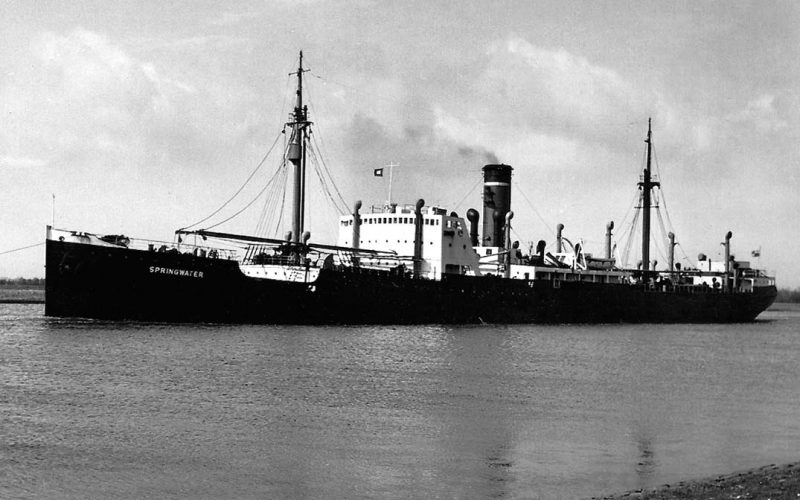
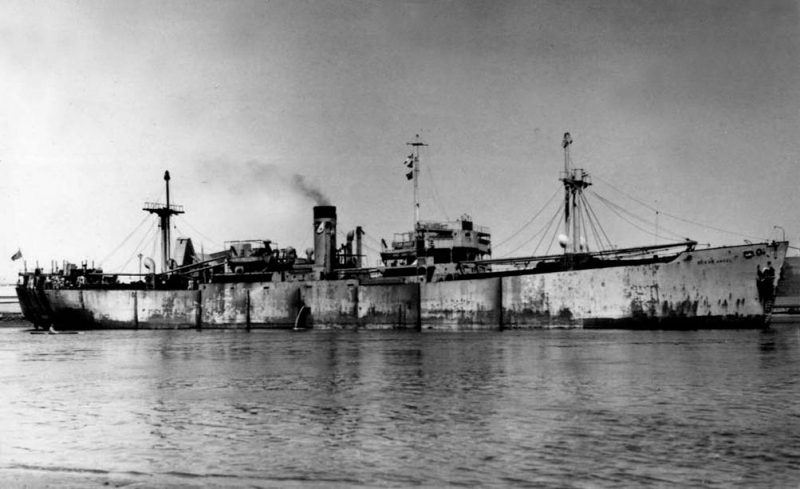
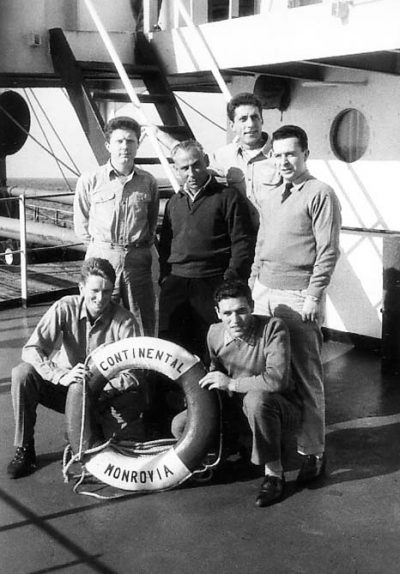
In 1956, when United States domiciled companies were no longer permitted to “flag out“ their ships, Tidewater’s remaining ship, the A.L. Kent, was transferred to San Agustin. Meanwhile, between 1953 and 1965, Alberto Ravano had again used Cia. Atlantica Pacifica S.A. to acquire the dry cargo ships and tankers listed below. Dry Cargo (between 1953 and 1962):-
Ravano name |
Built |
Former owner |
Sold |
| La Fleche ex Fort Albany | 1943 | P.&T. Steamship Co., Montreal | 1961 * |
| North River ex Empire Trader (Ixia, Empire Kumasi) | 1944 | Evanghelos P. Nomikos | 1960 * |
| Severn River Westford (Paris City, Empire Baxter) | 1941 | Duff, Herbert and Mitchell,London | 1959 |
| South River Ole Bull (built as Sallie S.Cotten) | 1943 | Peder Smedvig, Stavanger | 1965 |
| Susquehanna Sally Stove (Jan Pieterszoon Coen) | 1944 | Lorentzens Skibs A/S, Oslo | 1963 |
* sold for breaking
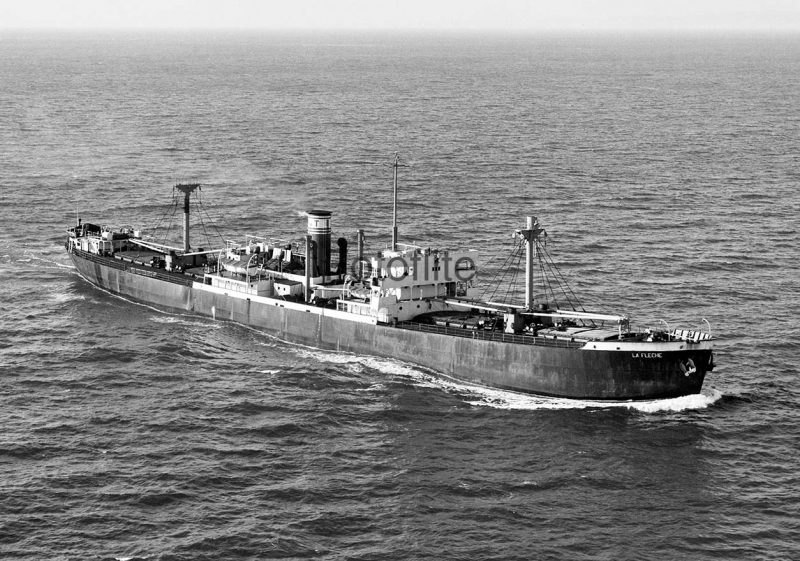
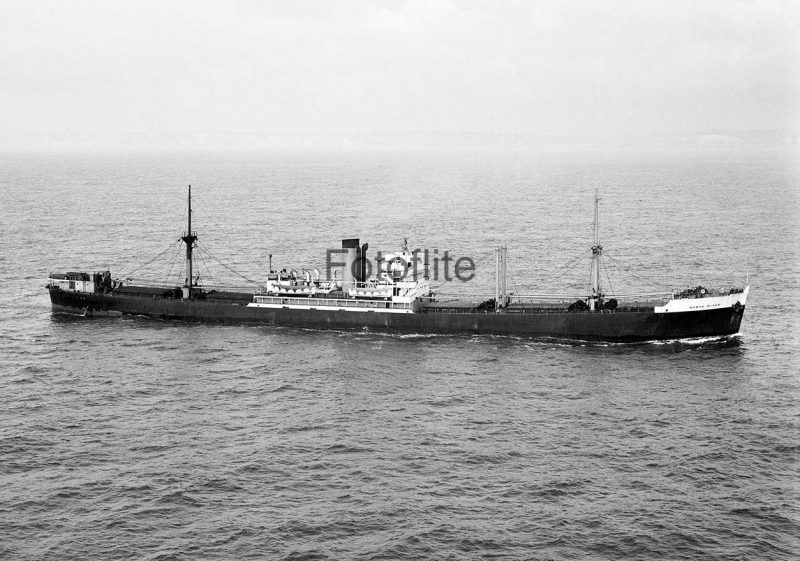
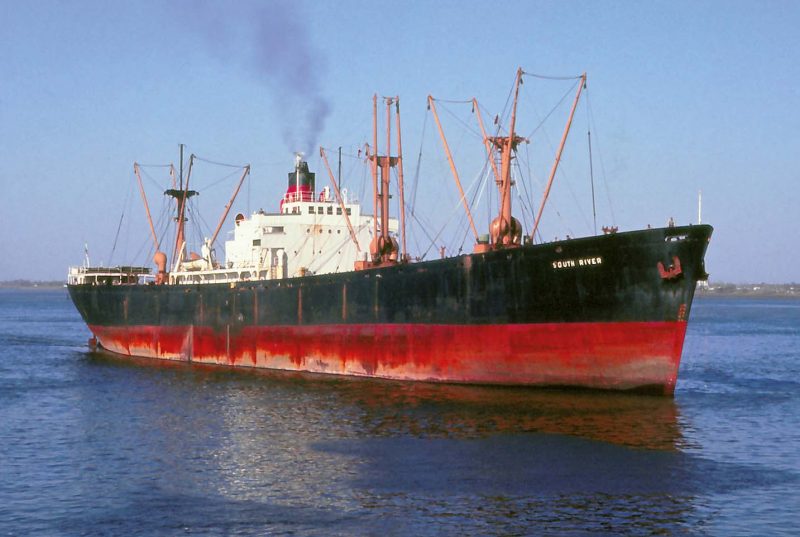

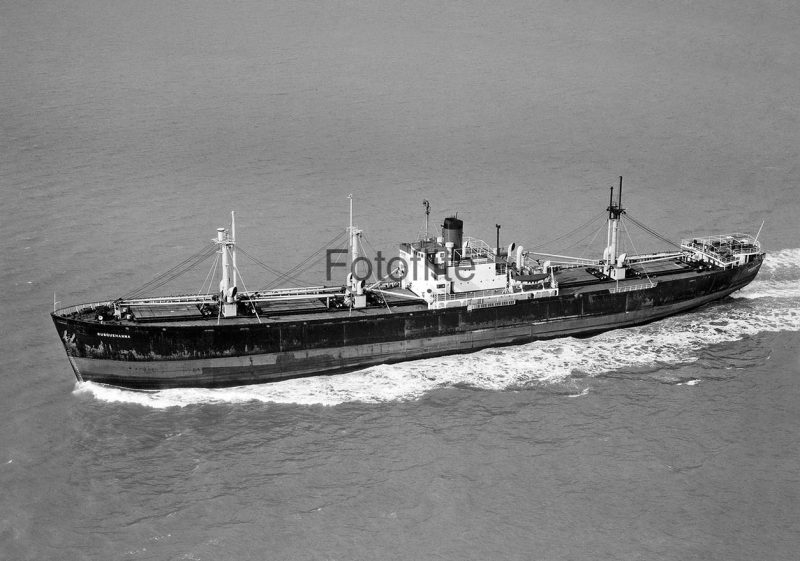
Tankers (between 1959 and 1965):-
Ravano name |
Built |
Former owner |
Sold |
| Bluewater ex Filefjell | 1948 | Olsen & Ugelstad, Oslo | 1965 |
| Vermont ex Jonwi | 1961 | Rolf Wigand, Bergen | 1977 (note) |
| Gota River (new from Eriksberg, Gothenburg) | 1962 | 1981 | |
| Louise ex Davanger | 1954 | Westfal-Larsen, Bergen | 1973 (for breaking) |
| Potomac ex Berge Edda | 1962 | Sig. Bergesen, Stavanger | 1978 (for breaking) |
- Note: Vermont was initially purchased in 1962 by Cia. de Nav. San Agustin S.A. and was transferred to Cia. Atlantica Pacifica S.A. in 1963.
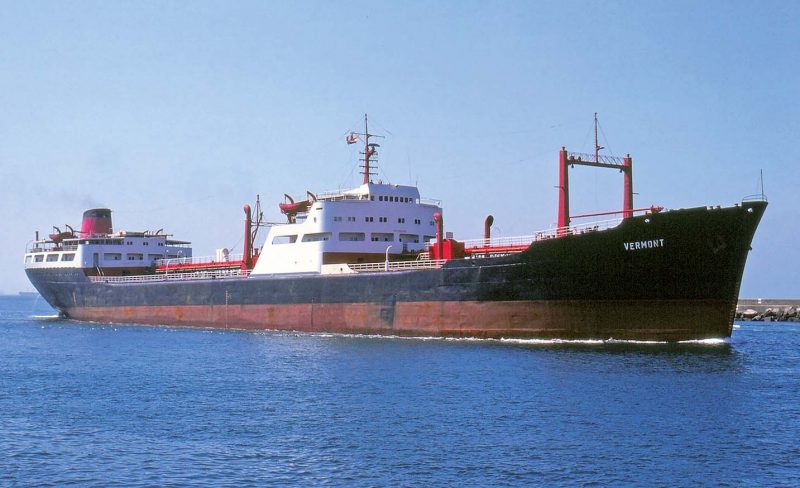
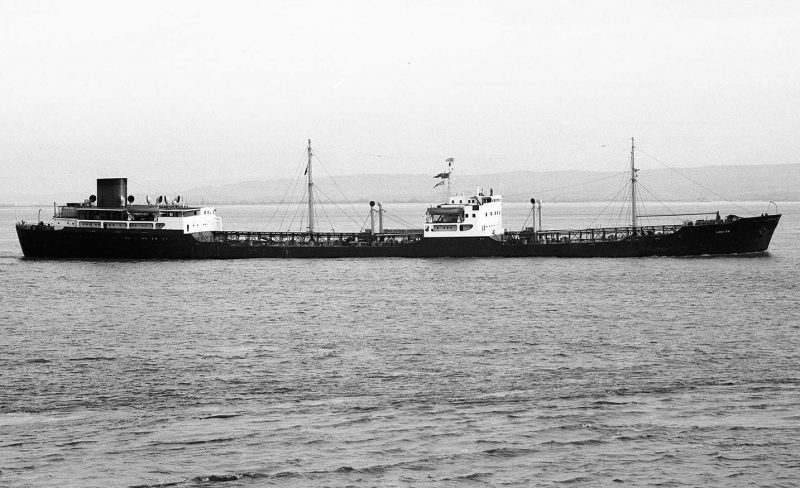
In addition, in 1961/2, Cia. de Nav. San Agustin S.A. had acquired the following two tankers:
Ravano name |
Built |
Former owner |
Sold |
| Middle River ex Fernmanor | 1950 | Fearnley & Eger, Oslo | 1967 |
| Spring Valley ex Erling Borthen | 1950 | Harry Borthen, Oslo | 1969 (for breaking) |
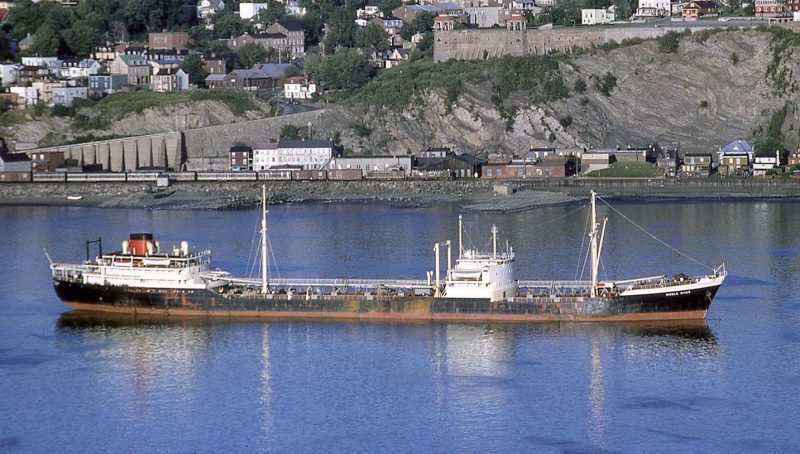
A further Panama based company, Soc. Nav. Pan-Europea S.A., was created in 1962 and briefly acquired the Liberty ship Capitaine Limor, which was simply renamed Capitaine before being sold to Keller Shipping of Switzerland to trade as Nevada until sold for breaking in 1971.
Between 1963 and 1967, Pan-Europea acquired the following high quality tankers from Norwegian owners:-
Ravano name |
Built |
Former owner |
Broken up |
| Gibson Island ex Grepa | 1952 | Leif Erichsen, Bergen | 1969 |
| Folaga ex Jarmona (built as Jagala) | 1953 | Anders Jahre, Sandefjord | 1974 |
| Springwater ex Mosli | 1953 | Torrey Mosvold, Kristiansand S. | 1973 |
| Eagle ex Bergehus | 1955 | Sig. Bergesen, Stavanger | 1977 |
| Alvee ex Fernstar | 1955 | Fearnley & Eger, Oslo | 1972 |
| Bianca (unchanged) | 1959 | Arthur H. Mathiesen, Oslo | 1978 |
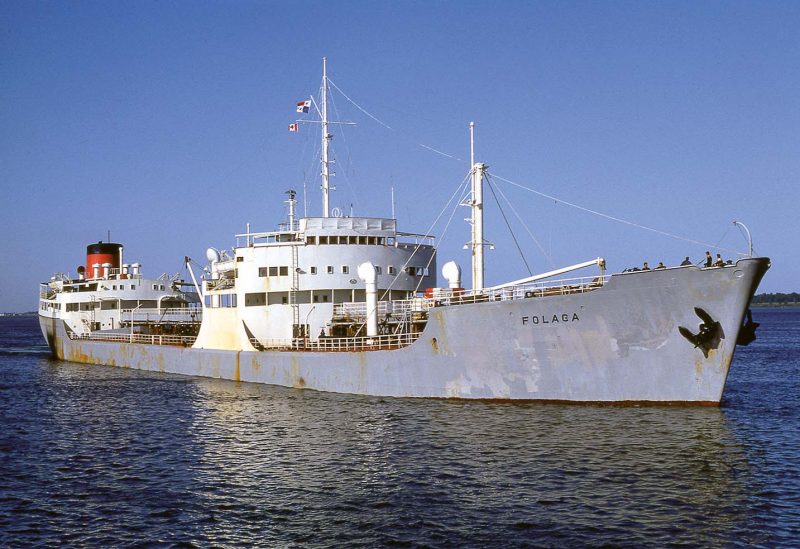
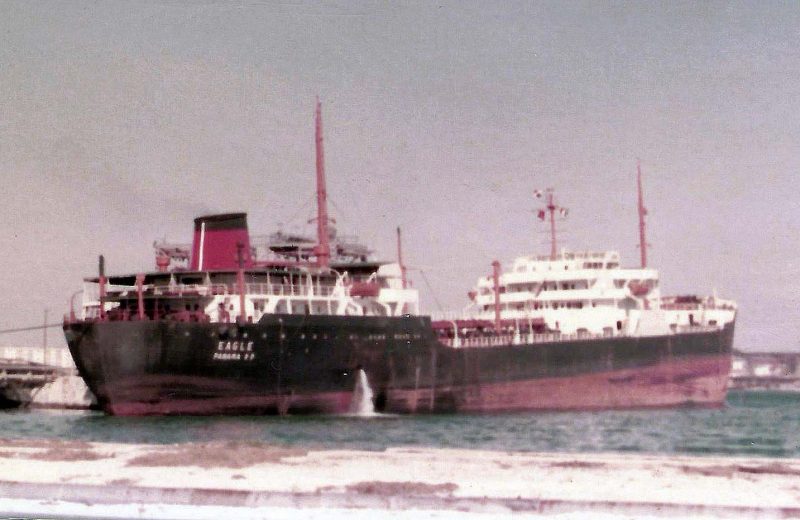
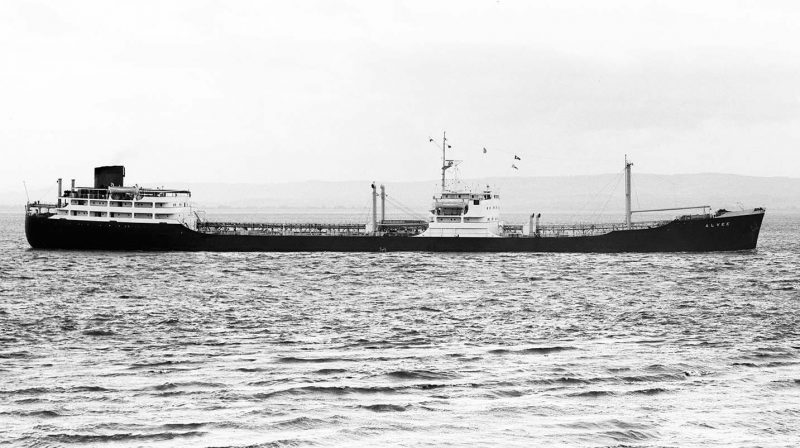
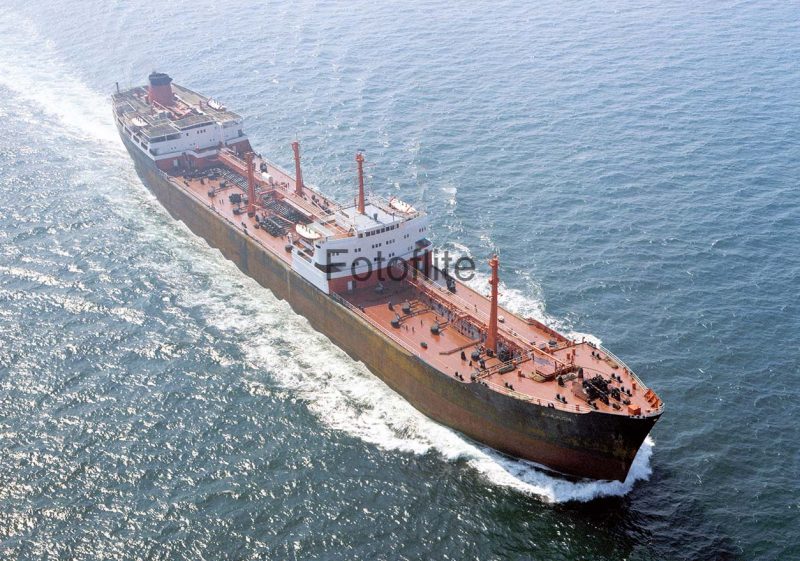
Tidewater’s Final Year
As mentioned in the introduction, Tidewater had ceased shipowning in 1956 for a period of about six years until 1962. It was reported that Captain Saglietto had for some time been seeking a Liberty ship in relatively good condition, therefore not requiring extensive repairs, which could be purchased for approximately $300,000, being funds which Tidewater had set aside for that purpose.
Eventually, in January 1962, the 1943 built Titan, the former Samgara, was purchased from the Ocean Steamship Co. Ltd. of Liverpool. The purchase price of the ship was $259,000 and the cost of repairs and classification came to $47,000, thereby making a total cost of $306,000. Simply renamed Titanus, she was registered under the Liberian flag and traded successfully until sold to Japanese breakers in 1969. Titanus finally sailed from Nagoya on 19 October 1969 bound for her breaker’s yard at Mihara.
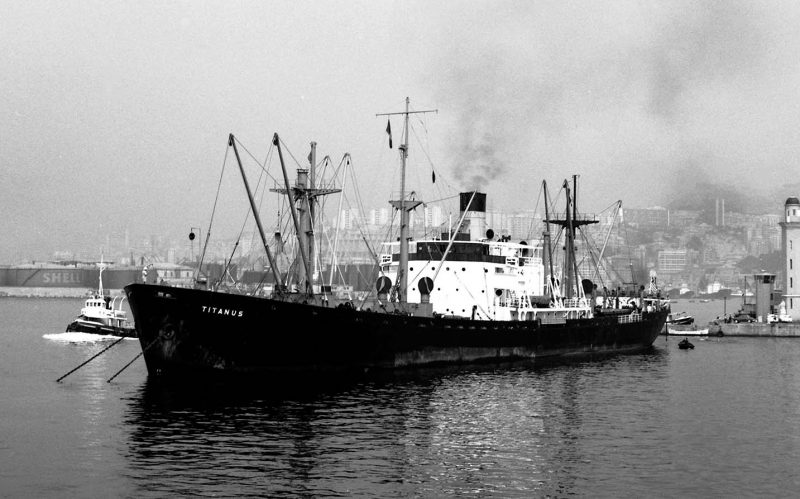
In 1969 Cia. De Nav. San Agustin S.A. was nominated to own the 1952 built tanker Wiikinki, purchased from Suomen Tankkilaiva Oy of Helsinki, which was neatly renamed Wikinki and operated by Tidewater until crushed in ice when east of Île d’Anticosti, Quebec, in March 1972 and sold to breakers at Valencia.
In 1970 Cia. Atlantica Pacifica S.A. took delivery of a new bulk carrier from Uraga named Seafox which remained in the fleet until sold to Greece in 1981.
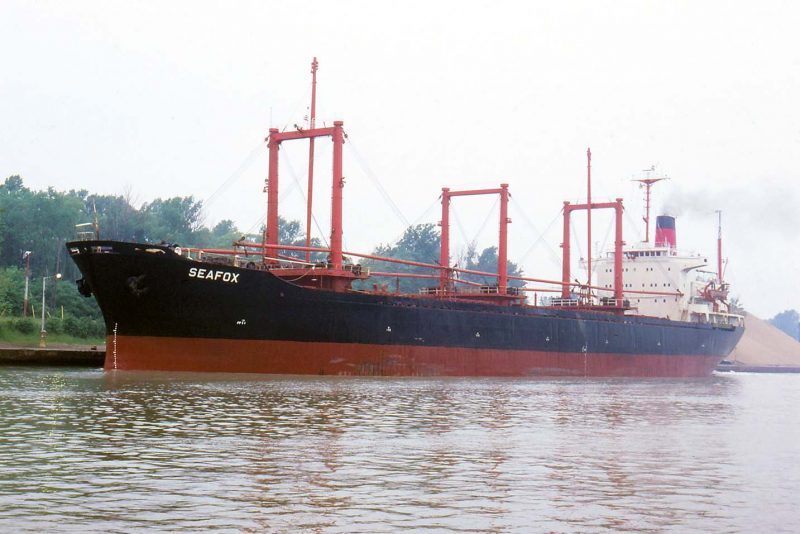
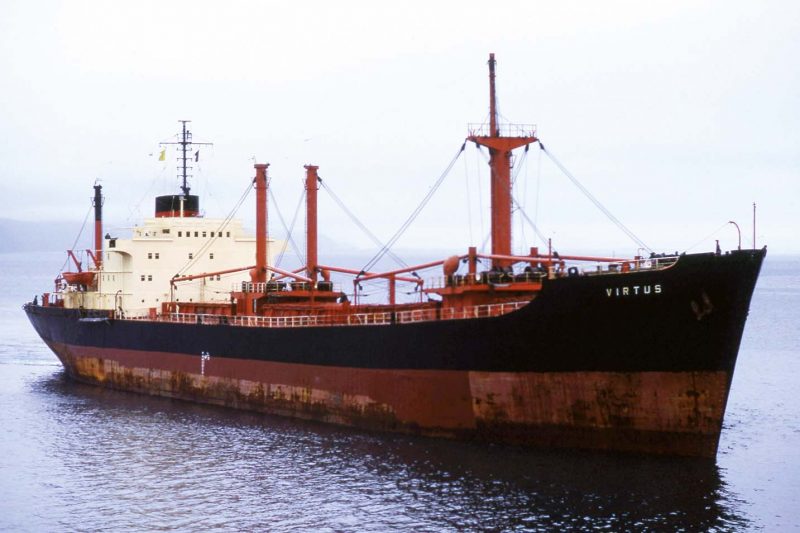
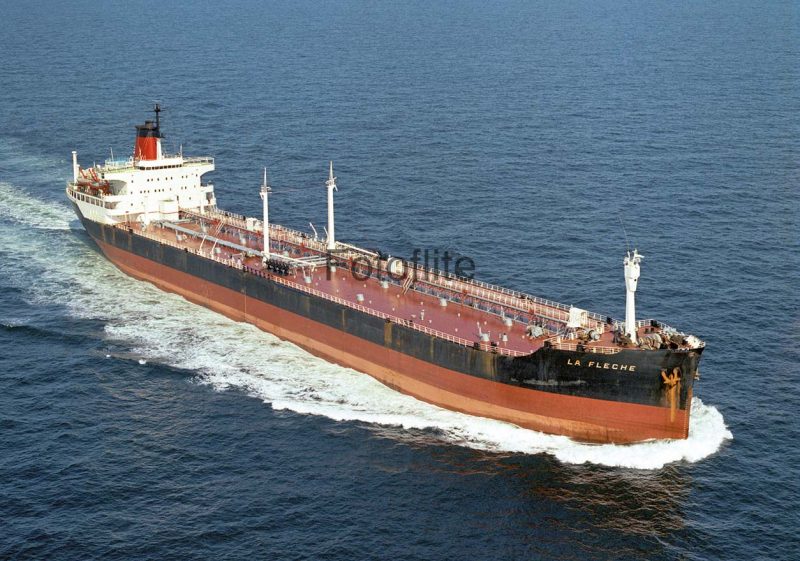

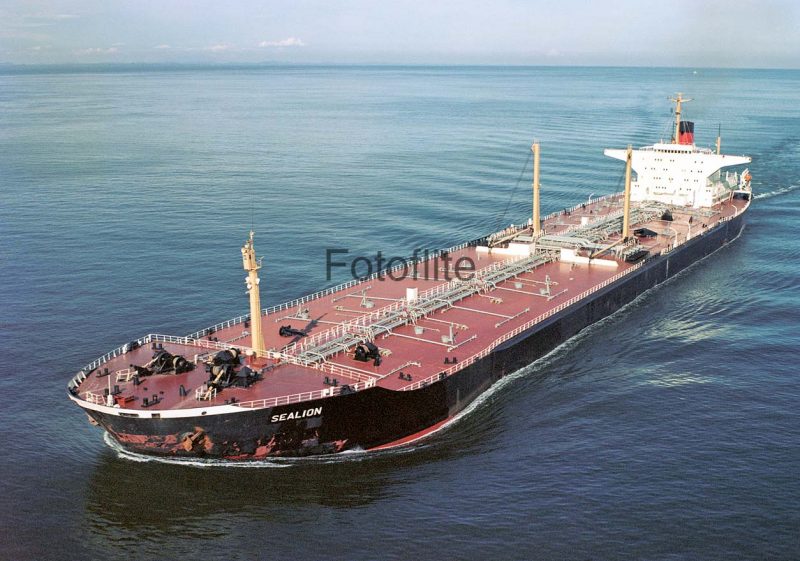
Meanwhile, in 1969, International Nav. Corp. took delivery of a new SD14 type ship named Virtus and also acquired another tanker, the 1965 Eriksberg built Tartar from Wilh. Wilhelmsen, which was then operated by Tidewater as La Fleche. Both ships were sold for further trading in 1981.
Then, in 1971, a large new tanker was delivered at Uraga as Sealion and, in 1974, another was delivered at Hiroshima as Seatiger into International Nav. Corp. ownership. The Seatiger was sold in 1981, following an explosion at Beaumont in 1979, operating as Overseas Boston until broken up in China in 2004, while Sealion remained in the Tidewater fleet until sold to Greece in 1984 to trade as Promitheas until scrapped at Chittagong in September 1993.
Other ships acquired by Alberto Ravano and managed by Tidewater were as follows:-
Ravano name |
Acquired |
Built |
Former owner |
Sold |
| Las Minas (unchanged) | 1974 | 1957 | Navimar, Lugano | 1977 (1) |
| Newnham ex Trelance (Ansaldo built tanker) | 1976 | 1966 | Transmarittima Sarda | 1982 * |
| Jill ex Ferncrest (tanker) | 1977 | 1966 | Fearnley & Eger, Oslo | 1982 * |
| Gem Kudamatsu built bulk carrier (new) | 1977 | 1982 | ||
| Heron Nagasaki built tanker(new) | 1977 | 1984 | ||
| Blossom ex Bente Brøvig (tanker, ex-Olivia) | 1979 | 1959 | Tharald Brøvig, Farsund | 1979 (2) |
| Magnolia ex Gohko Maru (tanker) | 1979 | 1967 | Mitsui O.S.K. Lines | 1985 (3) |
| Turbie ex Saint Anna (tanker, ex-Hoegh Fair) | 1980 | 1957 | Karavias (London) Ltd. | 1983 * |
| Kamar Varna built bulk carrier (new) | 1980 | 1983 | ||
| Nigma ex Cumberlandia (tanker) | 1980 | 1976 | Sanko Kisen K.K. | 1984 |
* sold for breaking
- Note 1: Las Minas, delivered from Ansaldo in December 1957 and nominally owned by Las Minas Cia. Nav. Panamena S.A., was initially owned by Navimar S.A. of Lugano. By 1971 the ship and nominal owning company had been purchased by Ravano, managed by his Société d’Etudes et de Gestion (S.D.E.G.), and in 1974 she was transferred to International Nav. Corporation. Las Minas Cia. Nav. Panamena S.A. then became the nominal owner of the tanker Halcon, built in 1958 as Edith Borthen and purchased from the ill fated Court Line who had operated the ship since 1963 as the Halcyon Days. Halcon was however soon sold for breaking, arriving at Gandia on 24 November 1976 for that purpose.
- Note 2: On 31 December 1980 the Blossom had suffered an explosion and broke in two 50 miles west of Sardinia while on ballast voyage from Lavéra oil terminal, Port de Bouc, bound for Taranto. The after part of the ship was taken in tow but grounded at Île Plane, Tunisia, on 11 January 1981 and was presumbly broken up in situ.
- Note 3: Paolo Piccardo had desembarked from the Magnolia on 30 August 1984. On 21 December 1984 the ship, engaged in Persian Gulf/Europe trips during the Iran/Iraq war, was hit by a Iraqi rocket and heavily damaged, with two crew sadly being killed. Following discharge of her cargo at Kharg Island, under the shortened name of Nolia, the ship was soon moved to Gadani Beach, Pakistan, for breaking.
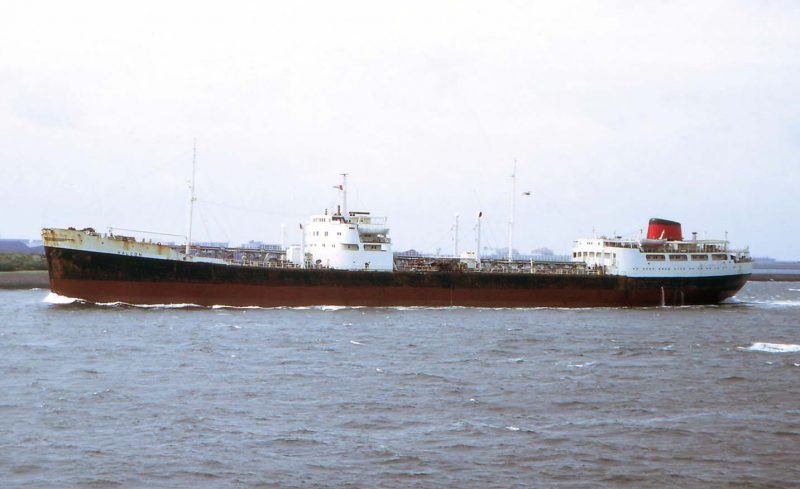
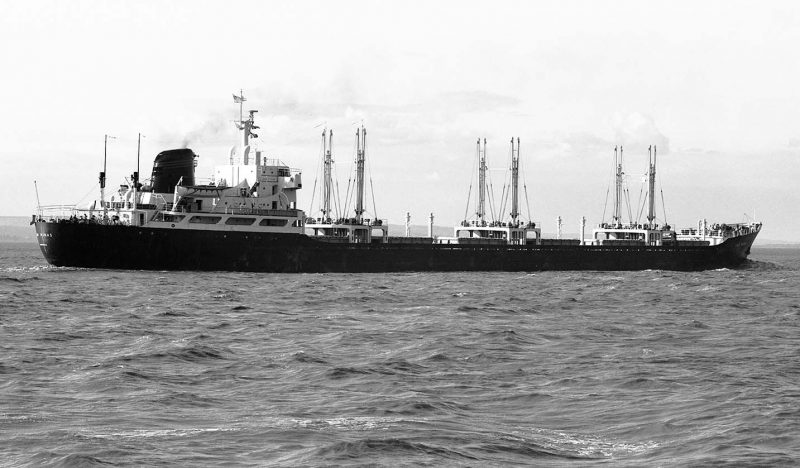
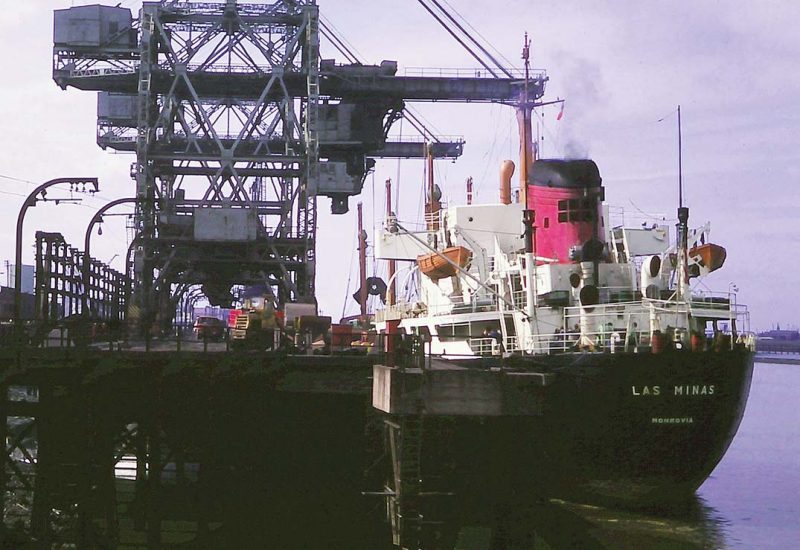
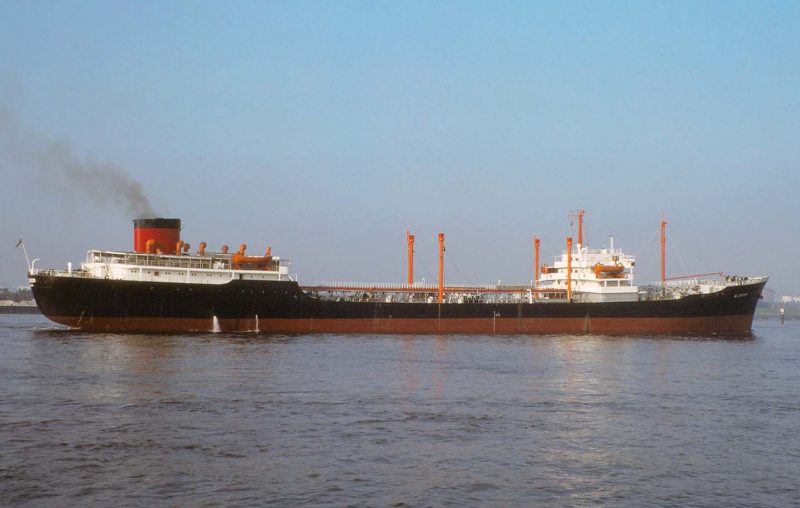
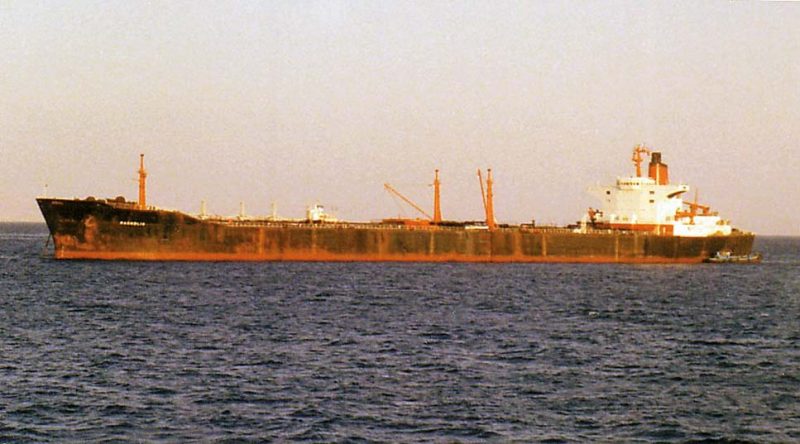
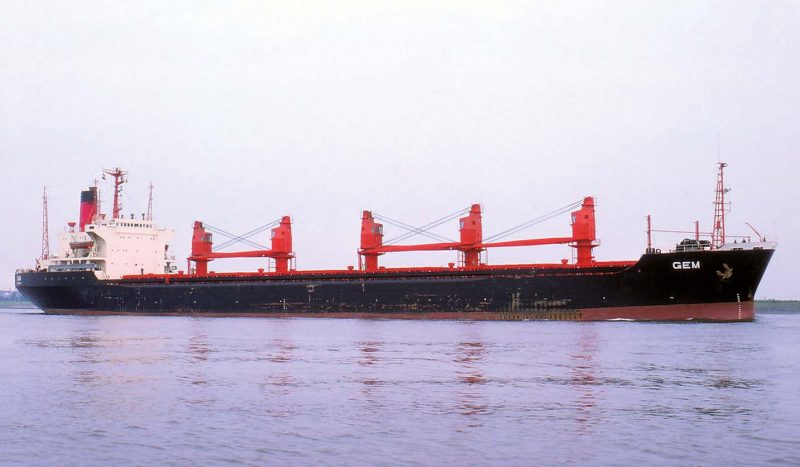

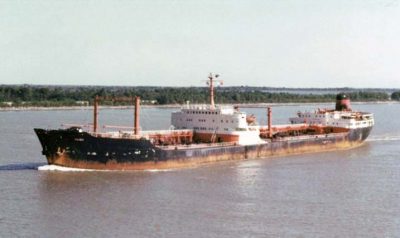
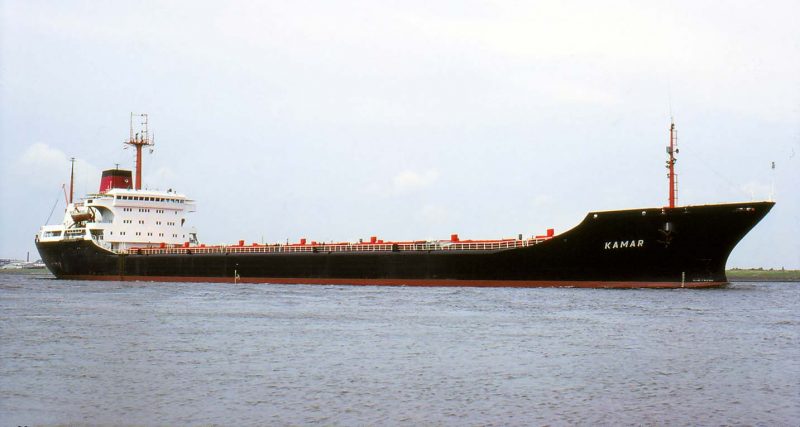
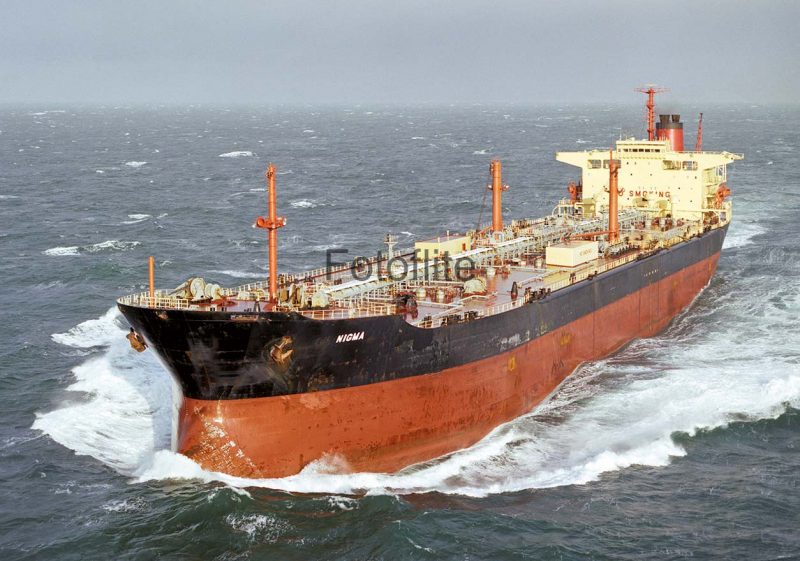
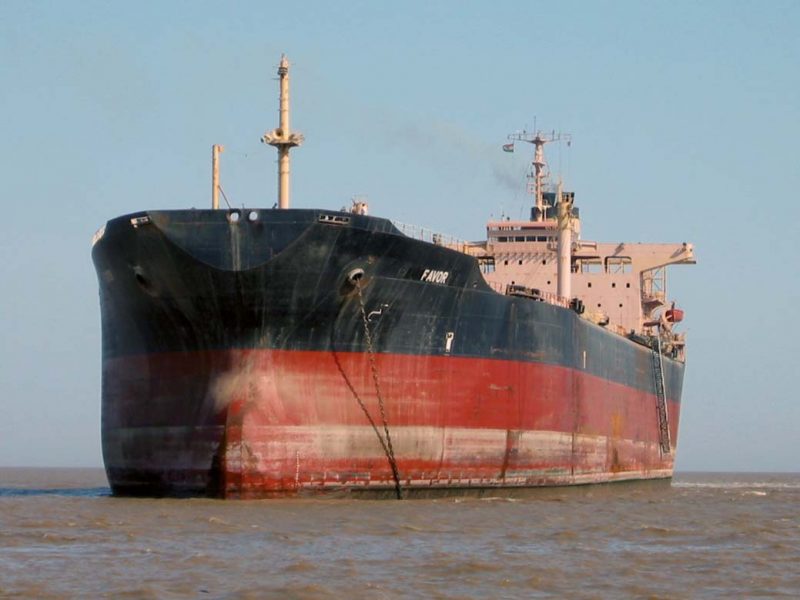
When Tidewater closed, late in 1984, the management of the Company’s remaining ship, the damaged Magnolia, became solely handled by Alberto Ravano’s Monte Carlo based company Société d’Etudes et de Gestion (S.D.E.G.) which, since the mid 1970s, had worked alongside Tidewater in the management of his non-Italian flagged fleet.
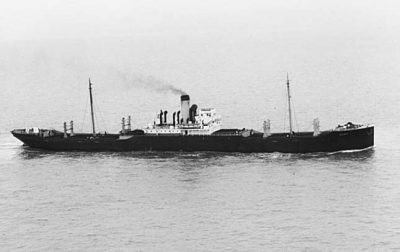
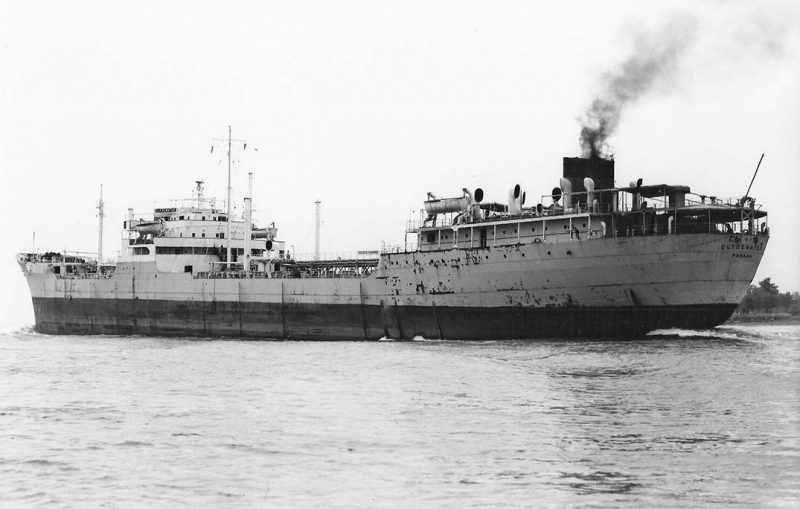
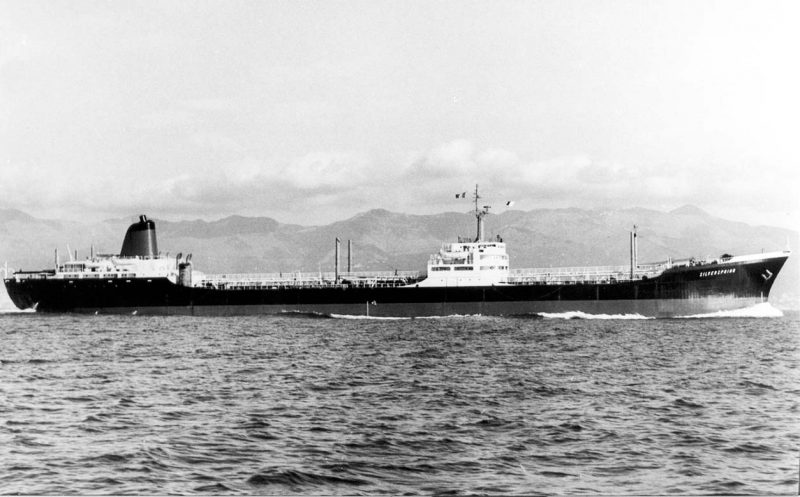
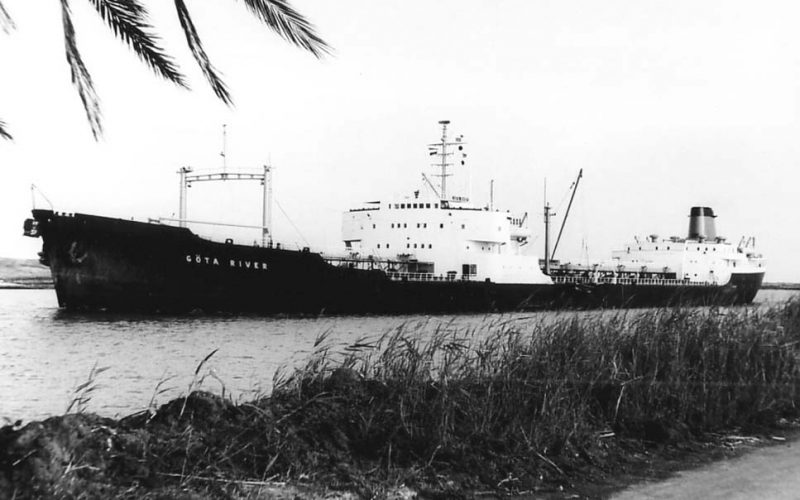
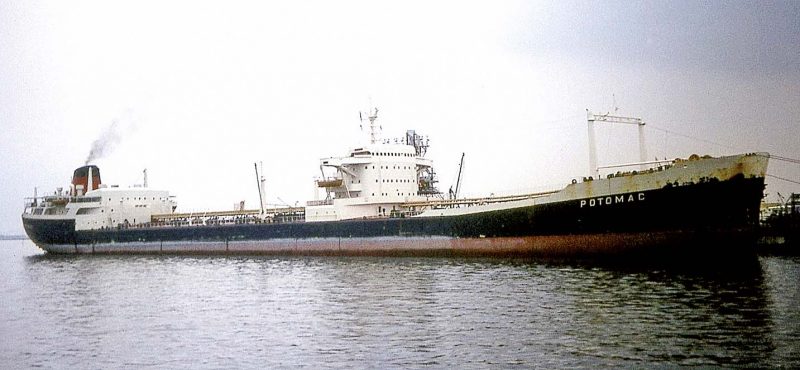
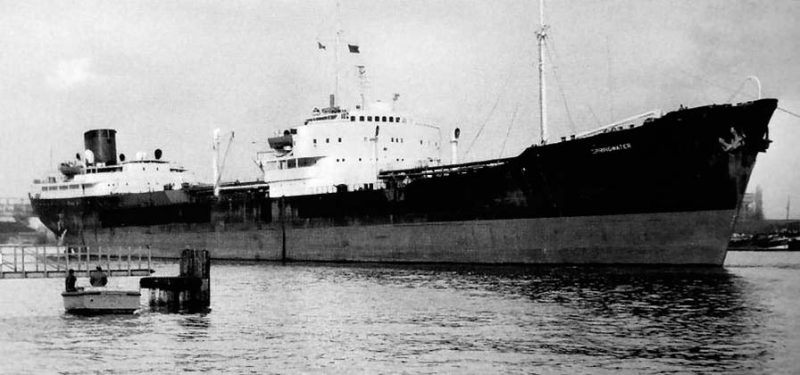
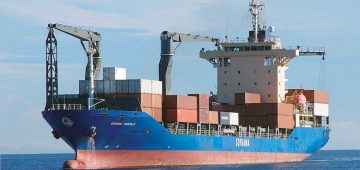
Comments
Sorry, comments are closed for this item